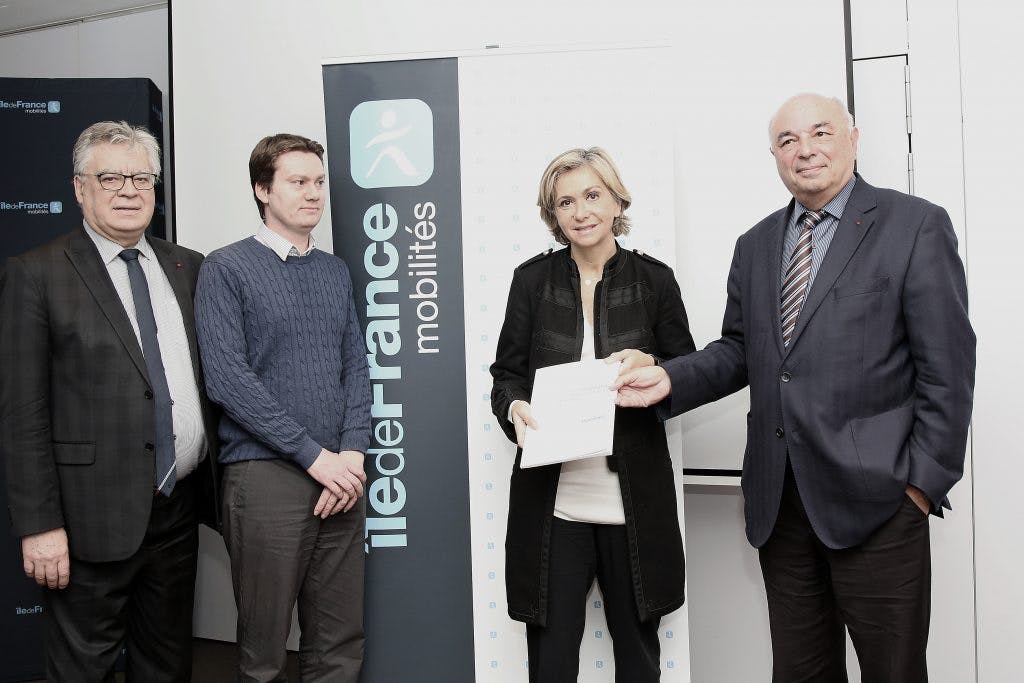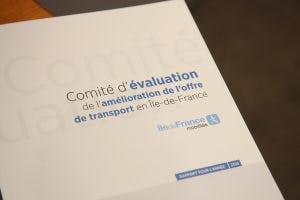The committee for the evaluation of the transport offer in Île-de-France publishes its first report
This committee, composed of Jean-Paul Bailly, Yves Ramette, Yves Crozet and Marc Pélissier, was created in 2017 to assess the scope and impact of the measures implemented by Île-de-France Mobilités aimed at:
- develop the public transport network in the Paris region,
- Increasing the transport offer on existing networks
- and improve the quality of service offered.

For this first edition, the committee made up of independent experts took up 12 measures that were implemented in 2016 (commissioning of Tram 6, deployment of the new metro line 9, implementation of the all-zone pass, etc.) by focusing on their conditions of implementation, their effectiveness and their impacts.
Valérie Pécresse, President of Île-de-France Mobilités: "I wanted Île-de-France Mobilités to set up an innovative approach to evaluation by independent experts of our public transport improvement policy. Ile-de-France residents must know exactly what they are paying for and the concrete results of the investments that are made. I am therefore very proud that we are pioneers in this field, because this approach is essential to report on our action to the people of the Ile-de-France region and to help us better orient our investment choices, by focusing above all on a policy of results."
The first report of this committee covers the year 2016. It was drawn up in collaboration with the Île-de-France Mobilités teams, who made the data necessary for this work available.
This report has two parts:
- The first presents an overall vision of the developments in 2016 in terms of service offer and quality.
- The second is based on a multi-criteria analysis of twelve measures put into service in 2016. These measures, selected by the committee, are of various natures: commissioning of new infrastructure, development of train, metro or bus lines, renewal of rolling stock or improvement of intermodal conditions.
The committee concludes three major lessons:
- Modest operations are the most efficient, often with a good ratio of their positive impacts to their costs.
- The renewal of rolling stock has a structuring character.
- Finally, in general, we must ensure a balance between the types of measures. This is particularly necessary, between structuring operations and those to improve daily life.

The full report and its analyses can be found here
Members of the committee for the evaluation of the transport offer in Île-de-France:
- Jean-Paul Bailly, former Chairman and Chief Executive Officer of RATP and former Chairman of the La Poste Group, who chairs the committee
- Yves Ramette, former Managing Director of SNCF Réseau Île-de-France and former Deputy Managing Director of RATP
- Yves Crozet, professor at the University of Lyon and former director of the Laboratory of Planning, Economics and Transport (LAET)
- Marc Pélissier, president of the Association of Transport Users FNAUT Île-de-France.
Transparency, impact assessment, lessons, the explanations of the desired approach of the work in a few words by the members of the committee:
The culture of evaluation is not very developed in France. And, in fact, it is indeed an unprecedented evaluation exercise that the President of the Île-de-France Region has invited us to carry out: to measure, year after year, the impact of the various and very varied new features of the year in the field of public transport.
In order to carry out this rather innovative exercise, it seemed important to us not to limit ourselves to a global approach using general statistics that are often fairly well known, but not very homogeneous and necessarily vary significantly from one year to the next. In addition, it seemed essential to us to have a specific approach, operation by operation, trying to bring together all the relevant data, limiting ourselves to the facts without making any judgments.
The reader will find, in complete transparency, a mine of information that is often little known, allowing a better appreciation of the impact and relevance of the various operations. These documents still contain a number of imperfections or shortcomings that we will try to remedy year after year. Due to its diversity and multifaceted nature, this document makes it possible to understand the difficulties of the exercise.
- The first is the time between the first approval and commissioning, which often exceeds ten years, even for modest operations. The commissioning itself is spread over several years. These are deadlines that far exceed the political deadlines.
- The second is the result of the diversity, heterogeneity and simultaneity, normal and even desirable, of operations: new infrastructures, network restructuring, new operating schedules, modernisation of stations, intermodality, renewal of rolling stock, pricing decisions, etc. The impacts themselves are very diverse: number of passengers concerned, time, comfort and safety savings, modal shifts, impacts on noise and pollution, economic gains, etc. Any aggregation is impossible, the overall assessment is difficult.
Cause-and-effect links are multifaceted and therefore difficult to establish. It is practically impossible, if we want to remain objective and stick to the facts, to directly link cause and effect as the factors, including those external to an operation, are so multiple and interdependent. In particular, modal shifts, one of the main objectives of the policy for the development and improvement of public transport, are difficult to measure, particularly in the short term, because of the very gradual ramp-up, the slow pace of change in habits and the evolution of urbanisation. As a result, they often appear modest and disappointing.